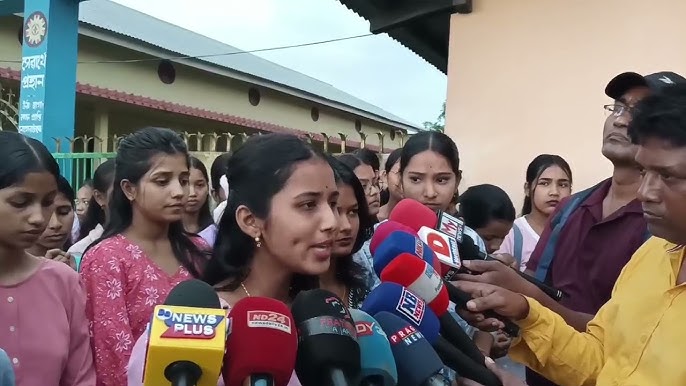
Sipajhar Students Protest Against Changes in Scooty Scheme Eligibility Criteria

 :
| Updated On: 17-May-2025 @ 2:21 pm
:
| Updated On: 17-May-2025 @ 2:21 pmSHARE
In Sipajhar, a significant group of students organized a protest to voice their opposition to the recent changes made by the state government in the eligibility criteria for receiving scooties under the Pragyan Bharati scheme. This scheme, which previously allowed students who scored 60% or above in their Higher Secondary examinations to obtain a scooty, has now been altered to restrict eligibility only to those students who achieve 80% or higher marks. The revision has led to widespread disappointment and unrest among the student community, prompting them to demand a rollback to the original rules.
The Pragyan Bharati scheme has been a critical initiative aimed at providing mobility and independence to deserving students, helping them travel to educational institutions and facilitating better access to education. Many students and their families have relied on this scheme as a means to ease transportation challenges, particularly in semi-urban and rural areas like Sipajhar. The sudden tightening of eligibility requirements has left a large section of students feeling excluded and unfairly treated.
During the protest, the students gathered in the streets of Sipajhar, raising slogans such as “We want scooties,” “We want justice,” and “Restore the Pragyan Bharati scheme.” Their chants echoed their frustration and urgency to be heard by the authorities. They highlighted how the new rule disproportionately impacts students who have worked hard to achieve good results but fall short of the higher 80% cutoff. The change, they argued, disregards the efforts of students who previously qualified under the 60% benchmark and relied on this scheme to pursue higher education without transportation hindrances.
The protesting students appealed directly to Assam’s Chief Minister, Himanta Biswa Sarma, urging him to reconsider the decision and reinstate the previous eligibility criteria. They emphasized that the original 60% threshold was more inclusive and fair, providing support to a broader range of students who need assistance the most. The students expressed hope that the government would acknowledge their concerns and take prompt action to alleviate their difficulties.
This protest highlights a broader issue of accessibility and equity in education-related welfare schemes. While the government aims to promote meritocracy by increasing the cutoff, students argue that such policies should also consider socio-economic factors and the varied challenges faced by learners across different regions. The revised criteria might unintentionally marginalize students who face financial constraints, transportation difficulties, and other barriers to education.
Moreover, the students’ activism underscores the importance of dialogue between policymakers and beneficiaries of welfare schemes. It serves as a reminder that changes in policy, especially those affecting vulnerable populations, should be implemented with sensitivity and thorough consultation to avoid disenfranchisement.
In summary, the protest in Sipajhar over the Pragyan Bharati scooty scheme’s changed eligibility criteria reflects deep student dissatisfaction with the increased cutoff percentage. The students demand the restoration of the previous rule to ensure equitable access to educational support. Their vocal demonstration aims to compel the government to balance merit-based policy changes with inclusivity, ensuring that welfare schemes serve their intended purpose of empowering all deserving students.